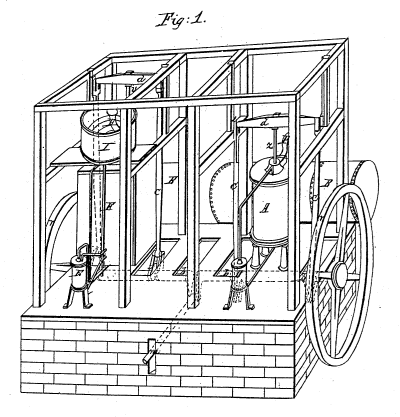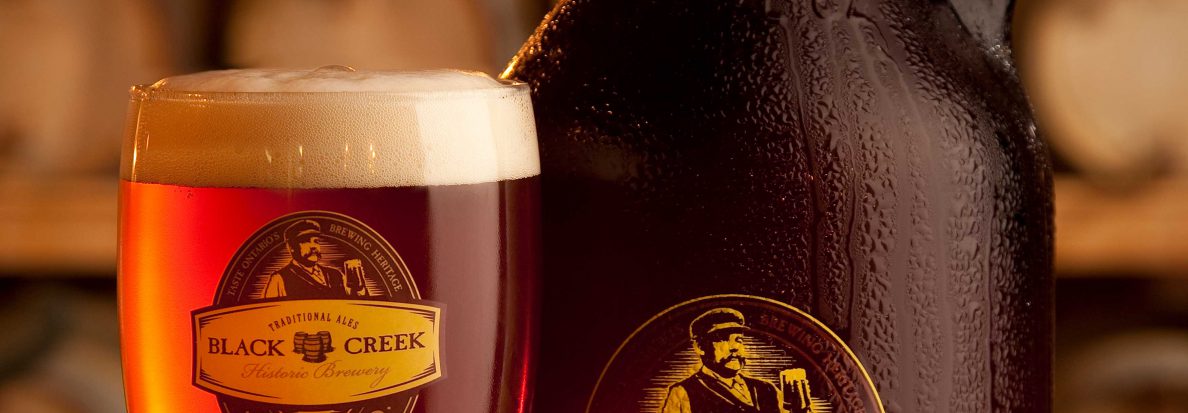You’ve probably noticed just how hot is in Toronto these days. Welcome to summer in the city! We’re nice and cool down here in the Black Creek Historic Brewery, thanks to a few 21st-century conveniences: specifically, air-conditioning and refrigerators. These modern marvels allow the beer to ferment properly and keep longer, providing you with tasty brew even in the hottest weather.
Now, things were a little trickier in the 1800s. Especially in the early decades of the nineteenth century, brewing was primarily a seasonal occupation, occurring in the cooler months between September (ish) and April (ish). When it gets really hot in the summer, brewing becomes harder, as ale yeasts like to ferment at room temperature—and lager yeasts, even colder than that! Not to mention, sitting out in the heat makes beer more likely to spoil.
So it’s not terribly surprising that Victorians were keen on experimenting with means of refrigeration. Simply, refrigeration is the process of moving heat from one place to another. The earliest “refrigerators” were simple cellars and/or holes in the ground, lined with straw or sawdust and filled with ice and snow.

Ice harvesting and distribution became quite a lucrative industry by the 1830s. Consumption jumped through the 1840s and 1850s: from 12,000 to 100,000 tons in New York City, and 6,000 to 85,000 tons in Boston. A particularly entrepreneurial man named Frederick Tudor seized the opportunity to make money sending ice to the tropics. To transport it, he experimented with different insulators, eventually reducing ice loss from 66% to 8%.

Besides ice, Victorians also explored refrigeration with mechanical means, which more-or-less fit the age’s general preoccupation with industry, innovation, and progress. Vapor-compression systems, like the one built in 1834 by inventor Jacob Perkins, worked continuously. The workings of vapor-compression refrigeration systems are more involved than can be described here, so I shall simply quote, “The vapor-compression uses a circulating liquid refrigerant as the medium which absorbs and removes heat from the space to be cooled and subsequently rejects that heat elsewhere.” Other inventors followed suit, including John Gorrie, who in 1842 created a system capable of freezing water into ice. Although a commercial disaster, the stage had been set for increasing experiments through the rest of the century.

Unsurprisingly, by the 1870s, the biggest refrigeration consumers were none other than the breweries, for reasons very much like those stated at the beginning of this post. That being said, increasing industrialization and pollution often resulted in “tainted ice,” which affected the health and flavour of the beer. Brewers’ complaints drove inventors to seek alternates…
…a path which eventually ended up in our cool, cozy brewery today. So come on down, take a break from the broiling sun, and enjoy a flight of cool (cellar-temperature) beer.
-Katie






